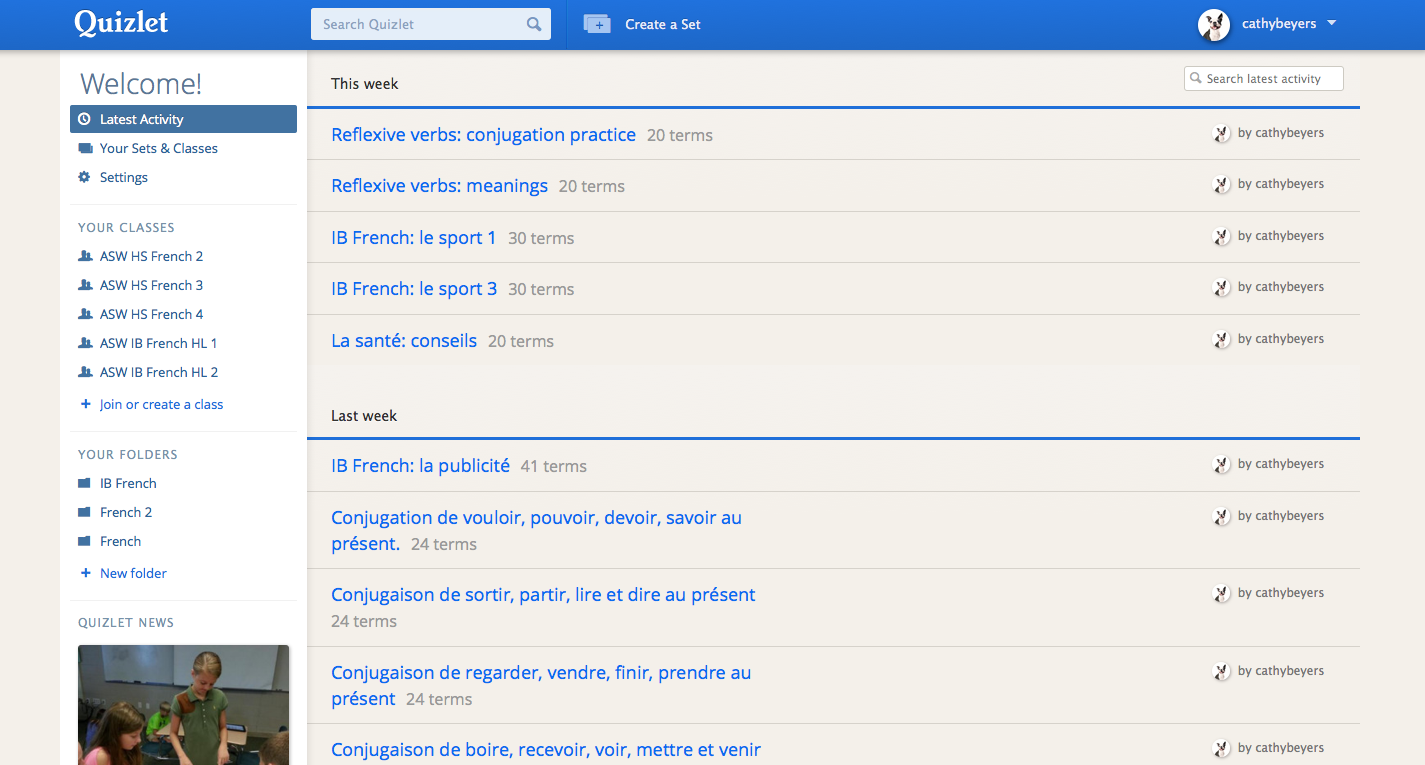Day 13: Tech tools for Language learning
Name the top edtech tools that you use on a consistent basis in the classroom, and rank them in terms of their perceived (by you) effectiveness.
Our school prides itself on its tech integration. At the beginning of the new school year our enthusiastic tech director left professionally printed cards in our teacher mailboxes to remind us once more of the fact that at ASW technology should be ubiquitous, seamless and embedded in teaching.
Most of us by now don't need reminding. We've been integrating for years. Tech is clearly ubiquitous, but the seamless and embedded I, among others, sometimes wrestle with. Over the years I have tried out a lot of tech tools, some of them more useful than others and the ones I use most are not necessarily the most advanced ones. These 5 are just the tip of the iceberg.
Quizlet (www.Quizlet.com)
One of the most important skills my beginning language students have to acquire is vocabulary revision. The tool that helps all of my students do this best is Quizlet. From a relatively simple flash card revision system a few years ago, it has evolved into a powerful language learning tool. I upload lists of words, verbs, expressions etc. for my students and they can practice these through games, quizzes, dictations. I can add my voice to the cards to help them with pronunciation as well.
 Quia (www.Quia.com)
Quia (www.Quia.com)
This is the tool that makes me save time as a teacher and this is incredibly useful if you want to flip your class room. It lets you create revision activities (challenge boards, who wants to be a millionaire etc.) and quizzes. You can integrate videos, sound files and images. It also helps you analyze your students' quiz results,shows what they found hard and what they need help with. You can create your own quizzes and activities, but you an also go to the shared area where others share what they have created.
Screencast-o-matic
Great for creating screencasts to demonstrate your students' oral skills. They can create a Keynote, or just take a photo and it will record their voice over whatever is on the screen. My students have created simple screencasts about their rooms or families, or more advanced ones abour paintings and history. Then it turns all of this into a Youtube clip. It's simple, but very effective.
Pixton
 Do your students like making cartoons, but find it hard to draw? This is a great solution. Students write their story board and create a cartoon online. You can leave specific instructions about the language content you want them to use and the evidence they have to produce. It takes some time, so I usually do not set more than one or two cartoons a year.
Do your students like making cartoons, but find it hard to draw? This is a great solution. Students write their story board and create a cartoon online. You can leave specific instructions about the language content you want them to use and the evidence they have to produce. It takes some time, so I usually do not set more than one or two cartoons a year.Glogster
 Interactive posters. Wonderful for integrating all kinds of content after you have finished a unit. Sound clips, pictures, video and text all come together. Students can pick their layout and make it look really cool.
Interactive posters. Wonderful for integrating all kinds of content after you have finished a unit. Sound clips, pictures, video and text all come together. Students can pick their layout and make it look really cool. These last three are great,because the end result can be embedded into their e-portfolio. Fun to look at and great indicators of progress.
There are, of course, many more awesome tools we use in class, but these are the ones that have become embedded in my teaching and in my students' learning. It has changed the way in which I assign homework, set projects, assess and make them reflect. Tech really can be a positive addition to language learning, provided it gets used correctly and in moderation.



Comments
Post a Comment